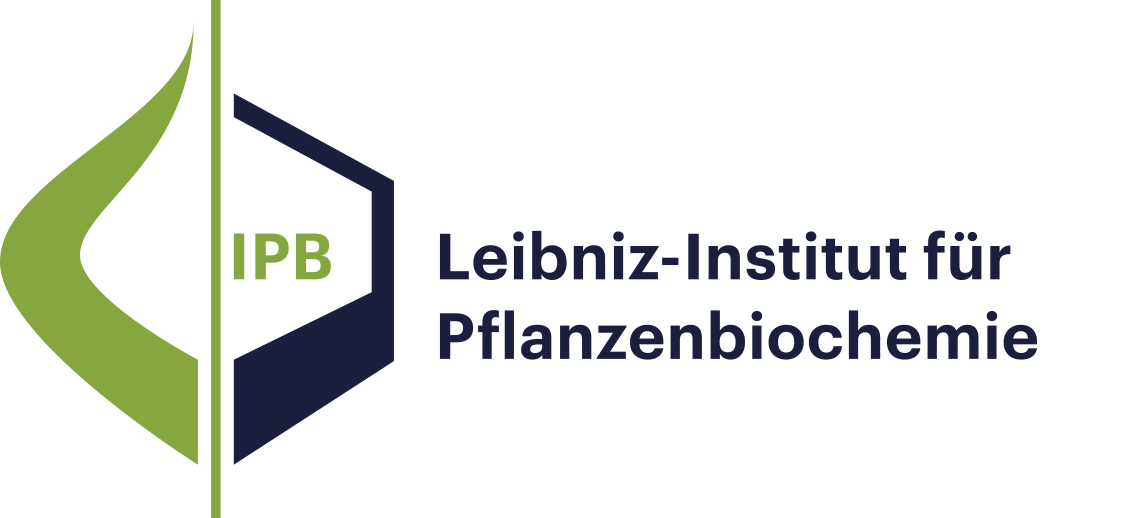- Ergebnisse als:
- Druckansicht
- Endnote (RIS)
- BibTeX
- Tabelle: CSV | HTML
Publikation
Publikation
Publikation
Publikation
Publikation
Publikation
Bücher und Buchkapitel
Leitbild und Forschungsprofil
Molekulare Signalverarbeitung
Natur- und Wirkstoffchemie
Biochemie pflanzlicher Interaktionen
Stoffwechsel- und Zellbiologie
Unabhängige Nachwuchsgruppen
Program Center MetaCom
Publikationen
Gute Wissenschaftliche Praxis
Forschungsförderung
Netzwerke und Verbundprojekte
Symposien und Kolloquien
Alumni-Forschungsgruppen
Publikationen
Publikation
Pflanzen und bestimmte Pilze haben im Laufe ihrer Entwicklungsgeschichte „gelernt”︁, in einer engen Assoziation im Boden, der Mykorrhiza, eine äußerst erfolgreiche Symbiose miteinander einzugehen. Arbuskuläre Mykorrhizapilze helfen Pflanzen sich auf nährstoffarmen Böden ausreichend mit Wasser, Nährsalzen und Spurenelementen zu versorgen und fördern entscheidend Diversität und Produktivität von Pflanzengesellschaften. Darüber hinaus zeigen mykorrhizierte Pflanzen eine erhöhte Widerstandsfähigkeit gegen Pathogenbefall. Im Gegenzug „bezahlt”︁ die Pflanze den Pilz für diesen Gewinn mit Kohlenhydraten in Form einfacher Zucker (Glucose, Fructose). Durch manche Erfolge in der Erforschung der Mykorrhiza auf Metaboliten‐ und Genebene beginnen wir allmählich zu erahnen, wie komplex die molekularen Interaktionen dieser Symbiose sind. Es ist zu erwarten, dass das steigende Interesse an der Mykorrhizaforschung zu neuen Einsichten in die Strategien von Pflanzen und Pilzen in der Entwicklung mutualistisch‐symbiontischer Assoziationen führen wird.
Publikation
Bisher war die Funktion der Polyphenoloxidasen (PPO) unklar. Inzwischen konnte aber gezeigt werden, dass eine Tyrosinase an der Betacyan‐Biosynthese des Portulakröschens (siehe Bild) und der Roten Rübe sowie eine Chalkon‐spezifische PPO an der Auronbildung in gelben Löwenmaulblüten beteiligt ist.
Publikation
Enzymes in search of a function, for polyphenol oxidases (PPOs), described as such, this situation has changed recently. A tyrosinase is involved in betacyanin biosynthesis in common portulaca (see picture) and red beet, and a chalcone‐specific PPO is responsible for the formation of aurones in yellow snapdragon flowers.
Publikation
In the present paper we analyzed plastid populations labeled by the green fluorescent protein in non-mycorrhizal and mycorrhizal roots of tobacco (Nicotiana tabacum L.). We show by confocal laser scanning microscopy (i) a dramatic increase in these plastids in mycorrhizal roots and (ii) the formation of dense plastid networks covering the symbiotic interface of the arbuscular mycorrhiza, the arbuscule. These cytological observations point to an important role of root cortical cell plastids in the functioning of arbuscular mycorrhizal symbiosis.
Publikation
The patterns of secondary metabolites in leaves of yeast invertase-transgenic tobacco plants (Nicotiana tabacum L. cv. Samsun NN) were analyzed. Plants expressing cytosolic yeast-derived invertase (cytInv) or apoplastic (cell wall associated) yeast invertase (cwInv) showed a characteristic phytochemical phenotype compared to untransformed controls (wild-type plants). The level of phenylpropanoids decreased in the cytInv plants but increased in the cwInv plants, which showed an induced de novo synthesis of a caffeic acid amide, i.e. N-caffeoylputrescine. In addition, the level of the coumarin glucoside scopolin was markedly enhanced. Increased accumulation of scopolin in the cwInv plants is possibly correlated with the induction of defense reactions and the appearance of necrotic lesions similar to the hypersensitive response caused by avirulent pathogens. This is consistent with results from potato virus Y-infected plants. Whereas there was no additional increase in the coumarins in leaves following infection in cwInv plants, wild-type plants showed a slight increase and cytInc a marked increase.
Publikation
Hydroxycinnamoyl-CoA : tyramine N-(hydroxycinnamoyl) transferase (THT) is a pivotal enzyme in the synthesis of N-(hydroxycinnamoyl)-amines, which are associated with cell wall fortification in plants. The cDNA encoding THT was cloned from the leaves of UV-C treated Capsicum annuum (hot pepper) using a differential screening strategy. The predicted protein encoded by the THT cDNA is 250 amino acids in length and has a relative molecular mass of 28,221. The protein sequence derived from the cDNA shares 76% and 67% identity with the potato and tobacco THT protein sequences, respectively. The recombinant pepper THT enzyme was purified using a bacterial overexpression system. The purified enzyme has a broad substrate specificity including acyl donors such as cinnamoyl-, sinapoyl-, feruloyl-, caffeoyl-, and 4-coumaroyl-CoA and acceptors such as tyramine and octopamine. In UV-C treated plants, the THT mRNA was strongly induced in leaves, and the elevated level of expression was stable for up to 36 h. THT mRNA also increased in leaves that were detached from the plant but not treated with UV-C. THT expression was measured in different plant tissues, and was constitutive at a similar level in leaf, root, stem, flower and fruit. Induction of THT mRNA was correlated with an increase in THT protein.
Bücher und Buchkapitel
0

